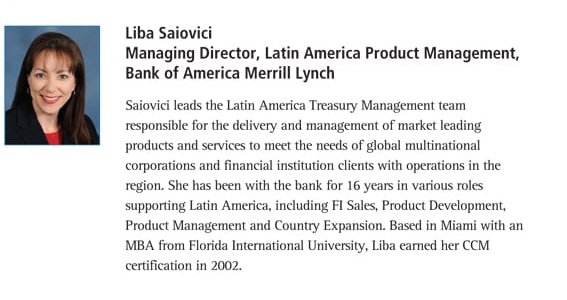by Liba Saiovici, Managing Director, Latin America Product Management, Bank of America Merrill Lynch
In the last ten years, Latin America has become an increasingly popular location for multinational corporations looking to set up shared service centres – predominantly, but not exclusively, those based in the US and Europe. And while cost has long been the main driver for companies setting up shared service centres, more recently other strategic drivers have come to the fore, including the ability to manage and process information across the organisation in a standardised way, improve compliance and reduce operational risk.
Companies may choose to set up shared service centres on a regional or global basis. By centralising activities and processes into a shared service centre, companies can benefit from economies of scale, standardised processes and the use of common systems. Shared service centres are not just used for treasury and finance functions, they also can help streamline and simplify other types of activity, including human resources, procurement, customer service and technical support.
Once a company decides to open a shared service centre, one of the most important decisions is location and this will be based on many different factors, including the company’s existing geographical footprint, the country’s political stability, tax system and cultural practices, as well as the quality of its workforce and the time zones in which it operates. In some cases, however, a company may choose to locate its service centre in a country in which it does not have a physical presence, particularly if the cost of doing business is lower.
Stability: key to cost-effective investment
Historically, the Latin America region was viewed as lacking the economic and political stability needed to make it an attractive destination for outside investment. Although this still applies to some individual countries within the region, there has been a shift over the last few years which has resulted in many overseas companies setting up shop in Latin America.
Sign up for free to read the full article
Register Login with LinkedInAlready have an account?
Login
Download our Free Treasury App for mobile and tablet to read articles – no log in required.
Download Version Download Version


























